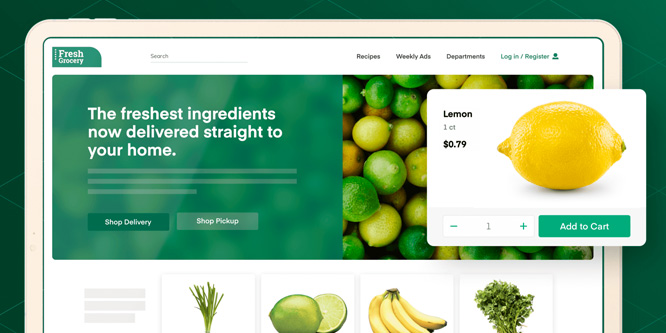
Source: Instacart
March 25, 2022
Instacart is moving into the ultrafast lane
Instacart is joining the ultrafast delivery race.
The company this week in a press release said it is building nano-fulfillment (aka micro-fulfillment) warehouses with the goal of speeding local deliveries to customers in as little as 15 minutes. Instacart’s Carrot Warehouses, as they are called, will have their formal launch as part of a deal with Publix in the Atlanta and Miami markets in the coming months.
Maria Brous, director of communications at Publix, said the new warehouses will “unlock ultrafast delivery in our major metro areas” and that the chain is “eager to continue to test and iterate on these new concepts as consumer needs continue to evolve.”
Instacart CEO Fidji Simo, in a CNBC interview, said her company is moving into ultrafast delivery as part of a portfolio of delivery options, understanding that consumers who need groceries in 15 minutes are currently a small portion of the market.
Carrot Warehouses are part of a larger platform initiative by Instacart. The company also announced Carrot Insights and Carrot Ads as part of its new plan.
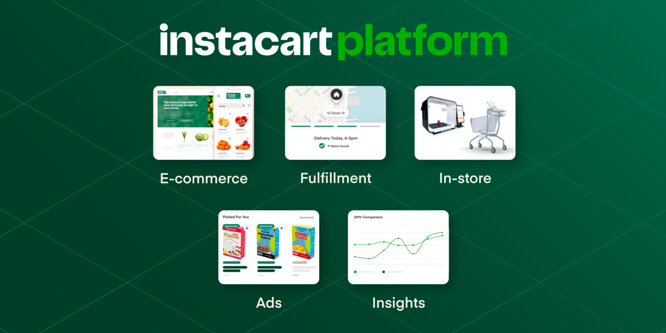
Carrot Insights are said to give retail customers “near real-time visibility into their operations” by tracking key metrics such as order volume, out-of-stocks, et al. across Instacart’s platform and retailers’ own apps. New data analytics are said to help merchants better understand performance on a geographic basis, out-of-stocks and buying trends.
Key Food is one of the retailers that is using Carrot Insights.
“As a co-operative with a variety of banners making up the Key Food family of supermarkets, it’s incredibly important for us to not only understand how each of our banners are operating, but also how our ecommerce business is performing as a whole,” said George Knobloch, chief operating officer at Key Food Stores Co-Operative.
Some concerns were raised that retailers might be shut off from digital ad funds when Instacart in January announced the addition of digital ad products to its platform. The company appears to be addressing those concerns with the launch of Carrot Ads.
Instacart said the service brings the best of its ad network — technology, products, engineering, sales and data — to retailers’ e-commerce sites. Carrot Ads have a revenue sharing component intended to benefit Instacart customers, such as Schnucks and Plum Market.
Discussion Questions
DISCUSSION QUESTIONS: Do you see big opportunities for ultrafast delivery in grocery and what do you think of Instacart’s approach to that portion of the market? Which offering from Instacart’s platform — Carrot Ads, Carrot Warehouses or Carrot Insights — will be most valuable to retailers?
Poll
BrainTrust
Katie Thomas
Lead, Kearney Consumer Institute
Paula Rosenblum
Co-founder, RSR Research
Dave Bruno
Director, Retail Market Insights, Aptos
Recent Discussions



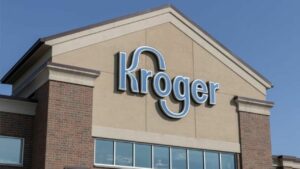
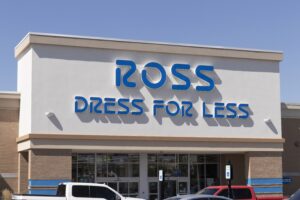

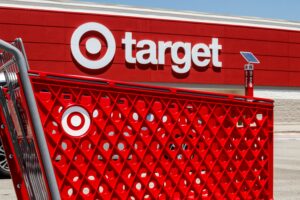
I’m a big advocate for the micro-fulfillment center model, and I think last-mile will provide many innovations for local retail. I think there’s still a compelling argument against the ultra-fast delivery strategy: “how fast do you really need your Jell-O pudding?”
The investment in this area is far outweighing the consumer demand. While getting things “ultra fast” seems appealing, it doesn’t account for the fact that consumers are highly adaptable. If they run out of milk for their coffee, per the recent DoorDash commercial, they’ll just go to a coffee shop instead. Also, in these highly saturated areas, there are often plenty of stores/bodegas/etc. for people to grab what they need.
As the article aptly points out, only in grocery would one need that kind of speed and only a relatively small segment would need it. It might work or it might be too expensive to operate if the cost can’t be amortized over a large base of customers.
My question is, do we really need 15 minute deliveries? I can understand that some medicine deliveries may be necessary in extreme cases or in an emergency, but to get frozen pizza and other groceries in 15 minutes just leads to more chaos on the streets. Accidents, injuries and sometimes deaths makes this a really stupid trend. People, delivery people, should not be risking their lives because we may be dying to get our groceries in 15 minutes.
The rise in quick-commerce platforms and operators left Instacart with little choice but to enter this space, especially as many retailers want to play in this arena to protect and grow market share. Given its scale and its model, Instacart has a better chance than many of making quick-commerce work. That said, I still think there are big question marks over the long term financial viability of quick-commerce and the degree to which consumers really need this type of service. Nevertheless, this is another string to Instacart’s bow that is much needed as growth slows and it slashes its valuation by almost 40 percent.
I am so weary of persistent out-of-stocks. I don’t care much about 15 minute delivery, and I think most consumers would say the same. Consumers want it when they want it, especially groceries, which can rot on porches.
But insights and improving the out-of-stock situation? That’s gold. I wish Instacart success, and forever will wonder why Publix can’t stay in-stock on cream cheese and other products that should be a pretty predictable buy.
These guys are smart, I’ll give them that. Every time I think a segment is going to wake up and realize Instacart is disintermediating the customer with the brand, they come out with more services that can also add value. Carrot Warehouses, I believe, will serve two valuable purposes – faster delivery and removing Instacart pickers from clogging the aisles at primary stores.
We crave convenience and ultrafast delivery reflects our desire to shorten the gap between online orders and satiation. Now Instacart brings its trusted brand and partnerships to the ultrafast space to deepen loyalty among urban shoppers.
All three of Instacart’s new offerings bring value to retailers:
Overall, Instacart Platform democratizes omnichannel grocery for retailers of all sizes. Its tech and logistics infrastructure gives grocers modern omnichannel capabilities to stay competitive.
Stop the madness! Ultrafast fulfillment is a death spiral for profits! Consumers are not demanding it, nobody can provide it at a profitable cost, and the microfulfillment locations are wreaking havoc in cities. But other than all that, what’s not to love?
The quick commerce niche is exactly that — a niche, and 15-minute delivery will comprise a sliver of overall revenue. That said, I really like Instacart’s strategy for the other three components: warehouses, ads, and insights. These three offer tremendous upside if they deliver real value to participating retailers. The rise of in-house media networks certainly has been popular and many of them are raking in loads of cash. I can easily see Instacart driving a sizable revenue stream here. Likewise, I see insights as another sizable revenue stream. I’d recommend Instacart develop a tiered offering with different price points for a variety of big/small retailers.
It seems this is a lot of hoopla for something that the CEO says they understand — “that consumers who need groceries in 15 minutes are currently a small portion of the market.”
The idea of micro-warehouses is an excellent one. Especially if they keep the Instacart shoppers out of store aisles. But I continue to think that 15-minute delivery is a solution to something that is not a problem.
I agree with Gene. Does anyone “need” groceries in 15 minutes? The delivery time competition has become ridiculous. I think what customers care more about is minimal substitutions, driven by accurate real-time inventory availability, and the quality of the produce they receive.
Agreed. And especially for smaller and medium sized grocers — earning and keeping customers trust for what’s actually available to buy, getting orders right, proving out produce quality will win every time and increased brand loyalty over claiming 15-30 minute deliveries.
A micro-fulfillment center by any other name would smell as sweet. (That’s what Shakespeare might say about Instacart calling their MFCs “nano-fulfillment warehouses” or “Carrot Warehouses.”) Their game plan is the same as Kroger’s: use a hub-and-spoke system as close to the urban customer base as possible to fill and deliver orders fast. Otherwise, the real estate is just not available at anything close to a profitable price.
Now Kroger saw their use of Ocado as such a competitive advantage that they locked up technology for themselves in the U.S. Is Publix thinking the same thing with Instacart? For a regional player—although a large one—that’s probably overkill for Publix. Plus, Instacart has a much broader offering than Ocado, which is mostly an automated fulfillment play. We shall see.
Forget borrowing a cup of sugar from your neighbor! Customers want immediate gratification and convenience. Q-commerce is certainly changing how all retailers approach their supply chains, including smaller format stores. This is a great initiative to ensure Instacart stays ahead of the pack. Basic staple items (milk, eggs, bread) should be the focus along with those on the bottom of the ingredient list that create the “oh sh*t” moments — like spices.
In the “I want it NOW economy,” speed counts. It’s interesting how shipping and delivery have evolved. Not that many years ago the idea of having something delivered the same day was revolutionary. In the retail world, Amazon introduced same-day delivery in a big way. Then same day moved to two hours, and you know what happened next. Now we’re looking at 15-minute delivery times. If the customer will pay for it, and many will, then find a way to make this work.
The fact is, same-day delivery only makes up a small proportion of online orders today. While consumers like to have fast options, they don’t often utilize them. Combine that with so many people moving out of cities in recent years, and this look like a risky move. But Amazon changed our perception of delivery with their fast fulfillment and Amazon Prime so maybe Instacart can do the same for grocery. The interesting parts are data and ads. Grocery has struggled to invest in data at the rate of other retailers, so Instacart provides them with an interesting opportunity. And with their new ad model, perhaps we should look at them more as a marketplace that will drive most of their revenue from ads over time, rather than a fulfillment service. It’s going to be interesting to watch.
Ultrafast is a relatively smaller segment of the market and becomes more critical for convenience than for grocery. Customers looking for that last minute ingredient they forgot or just ran out of sugar are places where ultrafast might matter.
For the bulk of grocery, humans won’t be able to move at warp speed. Why? Because people actually shop when they go shopping and it’s usually longer than 15 minutes. Limitations will also include focus on metro areas that can leverage nano fulfillment — where only about 31% of the population resides.
Instacart has a great private label model to assist and drive value for retailers unwilling or unable to build their own super fast metro delivery services. Of these, Carrot warehouses will have the best short and long term effect while ads and insights will be highly dependent on retailer adoption.
With Instacart’s new retail platform largely targeted to smaller and mid-sized grocers, this looks like a good, evolutionary move.
Success depends on the scale at which these grocers have a need, have already made tech investments, or already successfully manage operations. In short, CEO Fidji Simo recognizes this reality in her a la carte reference.
Instacart will also have to earn the trust of new grocery customers, explaining how their data will be used, where it’s held, who ultimately owns it if Instacart is sold.
Of the three new capabilities, Carrot Ads should have the greatest initial upside and without a significant people investment for results. Getting CPG’s and manufacturers to participate towards even a small number of center store brands will lift the bottom line.
Carrot Insights has strong upside over the medium term to long-haul for grocers who embrace a greater project collective, in the investment of people, operations and new systems.
For warehouses, likely question is how bad do grocers want to own delivery and investment in new facilities, and how badly do customers want immediate delivery.
The question is cost versus effectiveness. There is a cost to the customer either through delivery charges or price increases, retailers has to keep their margins regardless of the requests of the vocal minority of customers who want it now and free delivery. Also given high fuel prices and low unemployment, where is the driver capacity for fast last mile delivery coming from?
Sorry, but as a shopper I see this as nothing but a headache for all the poor people who are employed through the Instacart platform. They already time everything we do; now we have to do 15 minute delivery as well?
Time wars are the new price wars – or at least they are in the current economic climate – it could well change if economies move into recession. Instacart is playing nicely to the needs of retailers who might be struggling to scale up a rapid delivery offer. This could be a great “stop gap” for retailers while they increase capacity or a longer term strategy. Ads are an interesting proposition in terms of sharing data in a way to benefit multiple parties – but really starts to illustrate the value of consumer related data and how capturing and leveraging it remain paramount.